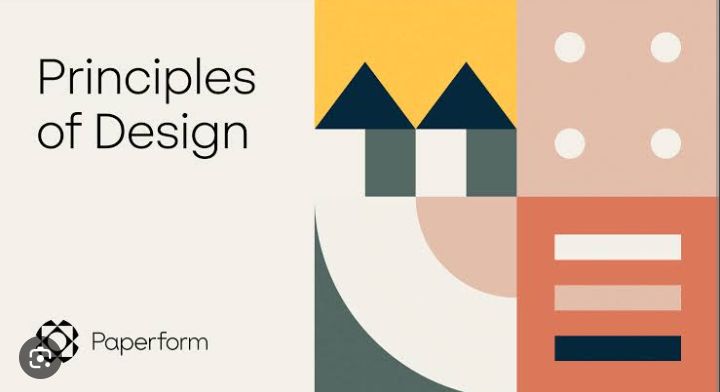Design principles in UI (User Interface) and UX (User Experience) serve as the foundation of effective digital design. They guide the creation of interfaces that are visually appealing, functionally intuitive, and user-centered. These principles are drawn from a combination of visual design theory, human psychology, interaction design, and behavioral science.The purpose of applying design principles is not only to create something “beautiful” but to build interfaces that communicate meaning, reduce confusion, improve usability, and enhance overall experience for users.
1. ⚖️ Balance
Balance in design refers to the even distribution of visual weight across a layout. It ensures that no part of the interface feels too “heavy” or “light” compared to others.
Symmetrical Balance: Visual elements are mirrored on either side of a central axis. This form of balance is calming, formal, and easy on the eyes. It is often used in corporate or serious content.
Asymmetrical Balance: Achieved by using contrast, scale, and positioning of dissimilar elements to create harmony. It feels more dynamic and modern, often used in creative or tech interfaces.
Radial Balance: Elements radiate outward from a central point (rare in web UI, but found in dashboard dials or circular progress indicators)
Importance to UX: Balanced designs are easier to scan, interpret, and interact with. They create a sense of stability and harmony in the user’s perception.
2. 🔺 Hierarchy
Visual hierarchy is the organization of content in a way that clearly indicates its level of importance. This helps guide the user’s attention naturally from most to least important.Hierarchy Is achieved through Size: Bigger elements attract more attention.Color and Contrast: Bold or high-contrast items stand out.Position: Items placed at the top, left, or center are seen first.Typography: Varying font weights and sizes distinguish headers from body text.Spacing: Padding and margins can separate or group elements meaningfully.
Importance to UX:Users should never have to wonder where to look first. A strong visual hierarchy leads them effortlessly through a flow of actions, which enhances clarity and decision-making
3. 🎯 Alignment
Alignment refers to how text, graphics, and other elements are placed in relation to each other to create a cohesive structure.
Key Concepts:Edge Alignment: Elements are aligned to a left, right, top, or bottom edge.Center Alignment: Elements are aligned around a central axis.Grid Systems: Help maintain consistent alignment and layout rhythm.
Importance to UX: Proper alignment creates order and readability. Poor alignment makes interfaces look chaotic and disorganized.
4. 🌐 Unity (and Harmony)
Unity ensures that all elements in a design work together to present a cohesive message. Harmony refers to a pleasing arrangement of parts.
Tools for Unity:
A defined style guide
Use of a design system (e.g., Material Design, Apple Human Interface Guidelines)
Consistent use of fonts, icons, colors, and spacing
Importance to UX: Uniity builds brand recognition and improves overall user trust. When a product feels “whole,” users are more likely to enjoy and continue using it.
5. 🧭 Navigation (Flow and Feedback)
Though often considered separately in UX, navigation principles ensure users can move through an interface logically and get feedback on their actions.
Key Points:
Predictable flows: Users should know what will happen next.
Feedback loops: Buttons change state, messages confirm actions, etc.
Breadcrumbs, progress bars, and back buttons enhance wayfinding.
Importance to UX: Navigation ties back to hierarchy, consistency, and alignment—ensuring the structure makes sense and supports the user’s goals.
Conclusion: While Creativity is key, UI/UX Designers must ensure that every design is functional and it serves the user’s experience.

